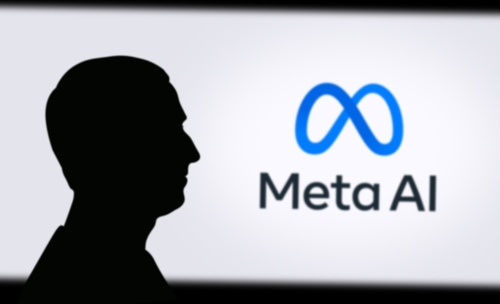Gsi Technology (GSIT) Q1 Sales Up 35%

Key Points
Revenue climbed to $6.3 million. SRAM revenue increased 35% year over year compared to Q1 FY2025, and
The company posted a GAAP net loss of $2.2 million, matching last quarter, as cash rose to $22.7 million after equity financing.
Management forecast net revenue of $5.9–$6.7 million and gross margin of 56–58%.
Gsi Technology (NASDAQ:GSIT), a designer of high-performance semiconductor memory and specialized AI chips, reported Q1 FY2026 results on July 31, 2025. The most significant news was a sharp rebound in revenue and the highest gross margin in over two years, driven by robust sales of SigmaQuad static random-access memory (SRAM) products. It booked $6.3 million in GAAP revenue, up from $5.9 million in Q4 FY2025 and $4.7 million in Q1 FY2025, while gross margin expanded to 58.1%. There were no Wall Street analyst estimates available for direct comparison, but these numbers marked notable gains. Despite the revenue growth and margin expansion, the company reported a GAAP net loss of $2.2 million, about the same as the last period. The period showcased major product progress and improved financial discipline, but ongoing risks around customer concentration and profitability remain important watchpoints.
| Metric | Q1 FY2026(Three months ended June 30, 2025) | Q4 FY2025(Three months ended March 31, 2025) | Q1 FY2025(Three months ended June 30, 2024) | Y/Y Change |
|---|---|---|---|---|
| Revenue (GAAP) | $6.3 million | $5.9 million | $4.7 million | 35.0% |
| Gross Margin | 58.1% | 56.1% | 46.3% | 11.8 pp |
| Operating Expenses | $5.8 million | $5.6 million | N/A | (3.6%) |
| Net Income (Loss) (GAAP) | $(2.2) million | $(2.2) million | $1.1 million | (305.7%) |
| EPS, Diluted (GAAP) | $(0.08) | $(0.09) | $0.04 | N/A |
| Cash and Cash Equivalents (Period End) | $22.7 million | $13.4 million | N/A |
Business Overview and Success Factors
Gsi Technology makes memory chips that serve high-speed data storage, networking, and defense needs. Its main products include high-speed SRAM for fast data access and, more recently, AI-focused products like associative processing units designed for edge computing and military uses.
In recent years, the company has focused on innovation around its APU technology, targeting artificial intelligence and edge computing markets where processing needs are high but power use must be low. It also relies on established SRAM product lines for steady income. Key success factors include commercializing its Gemini-II and Leda APU chips, maintaining leadership in SRAM, and managing concentration risk as revenue from certain customers fluctuates.
Quarter in Review: Product Progress, Customer Mix, and Financial Moves
SRAM revenue increased 35% year-over-year compared to Q1 FY2025, driven largely by a strong performance in the SRAM portfolio and a favorable shift in product mix. SRAM revenue climbed sharply year-over-year, and high-performance SigmaQuad SRAMs made up 62.5% of all shipments, compared to 36.3% in Q1 FY2025. This increase helped boost gross margin (GAAP) to a two-year high as the company benefited from a larger share of higher-margin products. Management attributed the gains to strong market momentum for AI processors.
Customer concentration shifted notably. Sales to Cadence Design Systems, a semiconductor design software firm, jumped to $1.5 million, or 23.9% of net revenues, up from $0 in Q1 FY2025. Meanwhile, revenue from KYEC, a semiconductor assembly and test company, dropped to $267,000 from $1.0 million in Q1 FY2025. Sales to Nokia, a telecom equipment provider, also fell year-over-year, accounting for 8.5% of revenue. Military and defense customers, once responsible for almost a third of shipments, decreased to 19.1% of total shipments. These shifts highlight the volatility that can result from relying on major buyers in a niche industry.
Costs remained in check, with total operating expenses down 14.7% year-over-year compared to Q1 FY2025, excluding a one-time gain in the prior-year period, and R&D declining to $3.1 million from $4.2 million in Q1 FY2025. The cost discipline stems in part from prior year reductions and some government funding under Small Business Innovation Research (SBIR) contracts, which help offset development spending. The net loss (GAAP) matched the prior quarter (Q4 FY2025), but represented an operational improvement versus Q1 FY2025, when a one-time gain masked the true recurring results.
Innovation continued in the company’s APU portfolio. The Gemini-II chip, an AI computing processor meant for edge devices, was declared "production ready," resolving remaining technical bugs. The company delivered a Leda-2 APU board for proof-of-concept development to a defense contractor and is working on algorithms for object recognition in drones and satellite systems. These APU offerings are intended to serve the growing need for efficient processing in AI-based and defense workload applications.
No special events or material asset sales occurred.
Looking Ahead: Second Quarter Outlook and Key Risks
Management predicts net revenue of $5.9 million to $6.7 million and a gross margin of 56% to 58%. These expectations reflect sustained demand for SRAM, ongoing defense-related APU pilots, and product readiness for future growth in the AI sector.
Investors should watch for further progress on APU commercialization and any material changes in customer mix. With the company continuing to explore strategic alternatives, ranging from potential asset sales to new funding, future quarters may bring significant developments in how the business is structured or financed. No dividend is currently paid by GSIT.
Revenue and net income presented using U.S. generally accepted accounting principles (GAAP) unless otherwise noted.
Where to invest $1,000 right now
When our analyst team has a stock tip, it can pay to listen. After all, Stock Advisor’s total average return is 1,036%* — a market-crushing outperformance compared to 181% for the S&P 500.
They just revealed what they believe are the 10 best stocks for investors to buy right now, available when you join Stock Advisor.
*Stock Advisor returns as of July 29, 2025
JesterAI is a Foolish AI, based on a variety of Large Language Models (LLMs) and proprietary Motley Fool systems. All articles published by JesterAI are reviewed by our editorial team, and The Motley Fool takes ultimate responsibility for the content of this article. JesterAI cannot own stocks and so it has no positions in any stocks mentioned. The Motley Fool has no position in any of the stocks mentioned. The Motley Fool has a disclosure policy.




.jpg)
